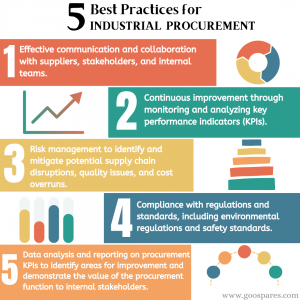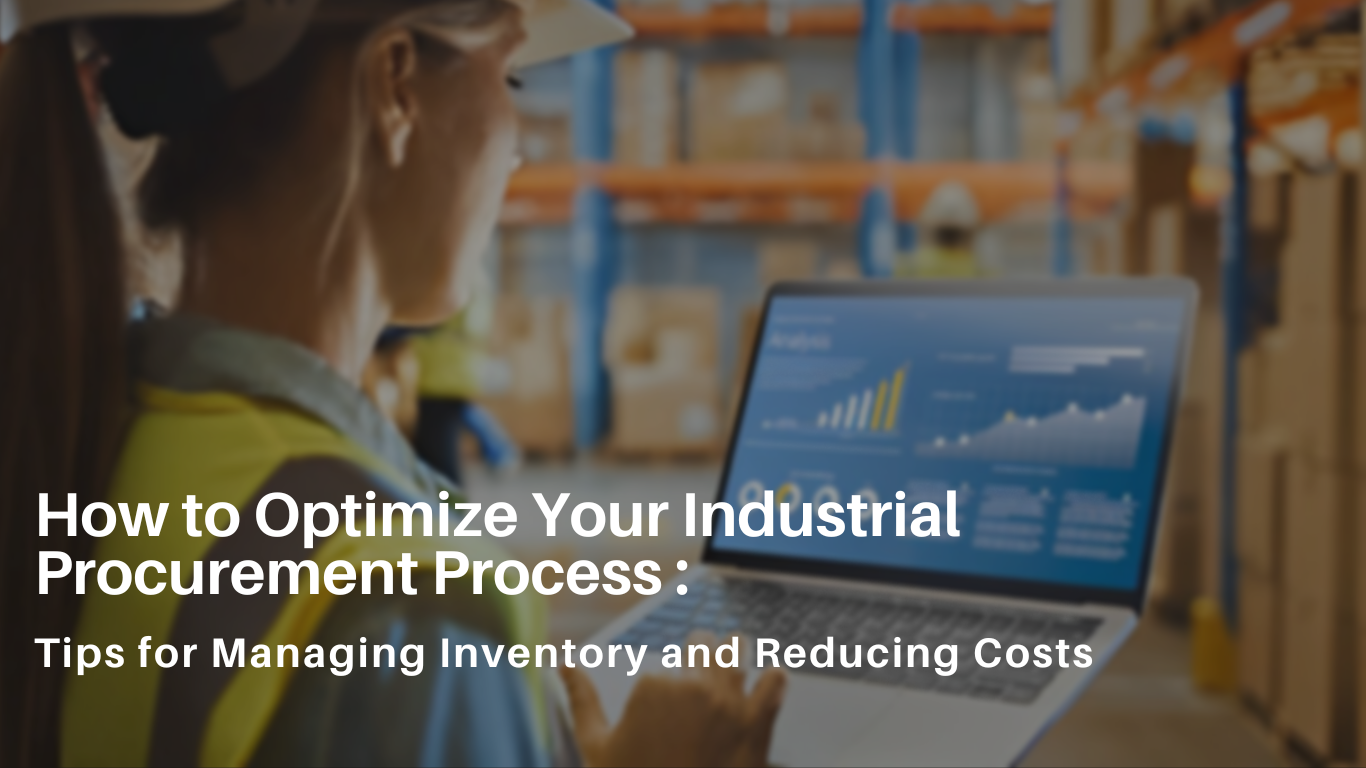Industrial procurement process refers to the steps involved in sourcing and purchasing goods and services required for a business’s production, maintenance, and other operations. The process typically begins with identifying the goods or services needed and defining the requirements, followed by supplier identification, evaluation, and selection. Once a supplier is selected, the negotiation and contract process begins, followed by the actual purchase and delivery of the goods or services.
The procurement process also involves inventory management, which includes tracking and monitoring inventory levels, optimizing inventory turnover, and ensuring the availability of necessary items while minimizing excess inventory.
The industrial procurement process plays a critical role in supply chain management and directly impacts a company’s operations, costs, and overall business performance. By optimizing the procurement process, businesses can achieve greater efficiency, lower costs, and improved supplier relationships.

Maintaining Optimal Inventory Levels
Conduct regular audits
Regular audits are essential to maintaining accurate inventory levels. Audits should be conducted at least once a year and should include physical counts of inventory and reconciliations with inventory records.
Implement an inventory management system
An inventory management system can help you keep track of inventory levels, monitor inventory usage, and identify trends and patterns in inventory movements.These valuable insights can enable better-informed decision-making regarding inventory management.
Set up a vendor-managed inventory system
A vendor-managed inventory system involves having your supplier monitor and manage your inventory levels. This can help you reduce inventory holding costs and ensure that you always have the right amount of inventory on hand.
Maintain good relationships with suppliers
Maintaining good relationships with your suppliers can help you obtain better pricing and more favorable terms. It can also help you identify potential supply chain risks and mitigate them before they become problems.
Utilize just-in-time (JIT) inventory management
Just-in-time (JIT) inventory management involves ordering inventory only when it’s needed, which can help you reduce inventory holding costs and improve efficiency. However, JIT inventory management requires careful planning and coordination with suppliers to ensure that you always have the right amount of inventory on hand.

Strategies for Reducing Procurement Expenses
Negotiate with suppliers
Negotiating with suppliers can help you obtain better pricing and more favorable terms. This can be accomplished by leveraging your purchasing volume, comparing prices from different suppliers, and being willing to walk away from a deal if it’s not in your best interests.
Consolidate purchasing
Consolidating purchasing involves combining purchases from multiple suppliers into a single purchase order. This can help you obtain better pricing and reduce administrative costs.
Streamline the procurement process
Streamlining the procurement process involves eliminating unnecessary steps and paperwork. This can help you reduce the time and cost required to process purchase orders and invoices.

Implement cost-saving measures
Cost-saving measures can include things like using alternative materials or suppliers, reducing waste, and improving energy efficiency. These measures can help you reduce costs while maintaining quality.
Consider outsourcing non-core procurement tasks
Outsourcing non-core procurement tasks can help you reduce costs and free up resources for core business activities. This can include tasks like procurement data entry, supplier research, and contract management.
It’s essential to understand that ongoing optimization is crucial for achieving success in industrial procurement. Regularly reviewing and improving the procurement process can help identify opportunities for optimization, promote sustainability, and reduce costs. By implementing best practices such as communication and collaboration, continuous improvement, risk management, compliance with regulations and standards, and data analysis and reporting, organizations can ensure long-term success.







